How to attend church with babies and toddlers
Published on November 12, 2025
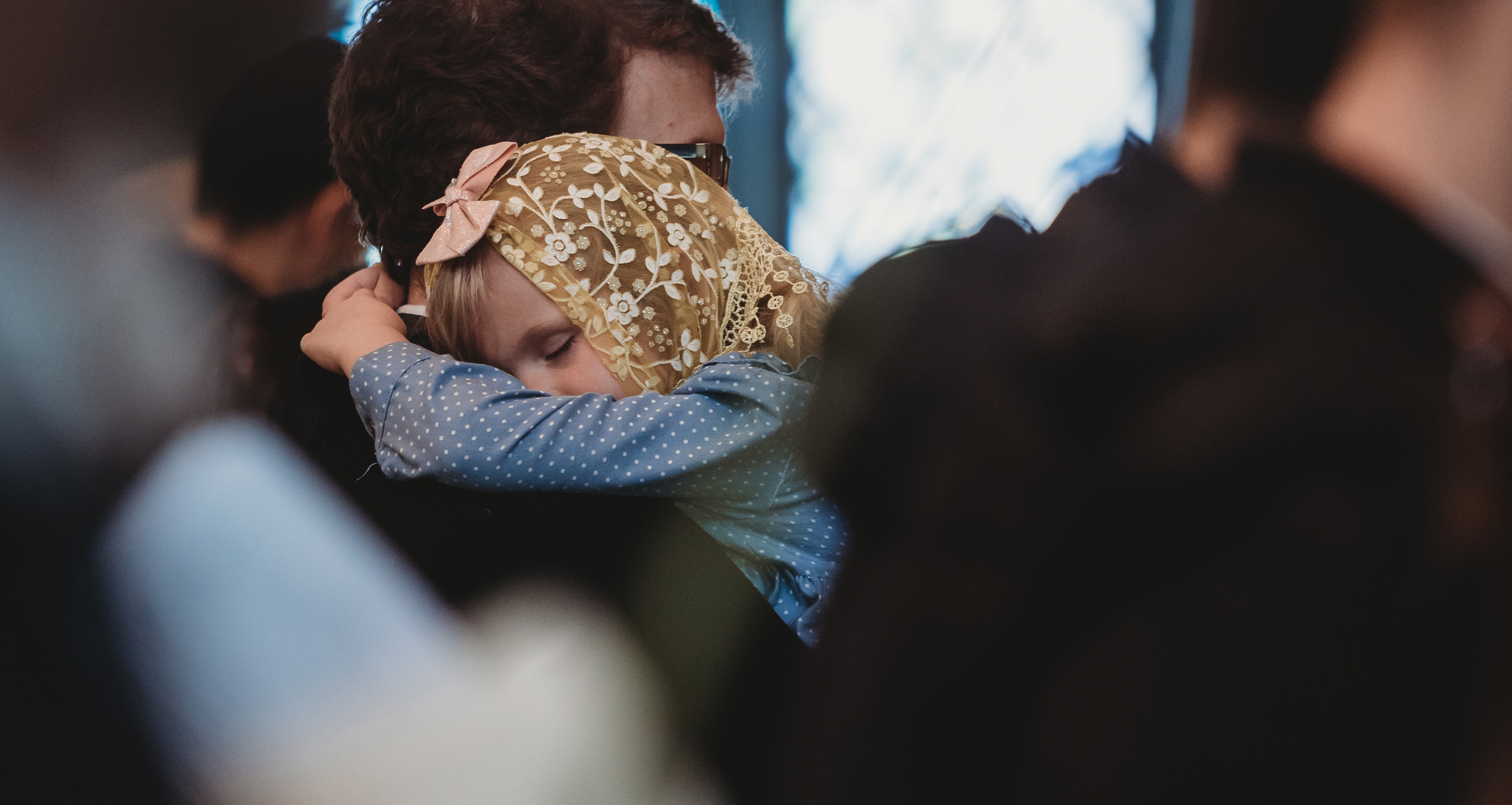
Taking your little ones to church can be unpredictable and far from perfect — but it’s absolutely worth it.
I say that as a mom of toddlers who is still figuring it out. Our family has spent more than a few Masses with me whispering through toddler meltdowns, while my husband paces the back of church with a baby, or as we negotiate handing over one last snack bag in exchange for three more quiet minutes.
There’s no quick fix for making church with little ones easy — and that’s okay. Every Sunday (or weekday) looks a little different when you have a baby on your hip and/or a toddler tugging at your sleeve. Still, bringing children to church is one of the most beautiful gifts we can give them. Even when it feels messy, every visit plants seeds of faith that will grow for years to come.
Here are a few strategies that can help your kids learn to sit through and even love being at church.

Remember: you and your children belong
If you’ve ever felt all eyes on you during Mass, you’re not alone. Many parents have left church convinced everyone was judging their child’s chatter or mid-homily cry. But here’s the truth: You and your children are always welcome in the Lord’s house. Jesus delighted in the presence of little ones, even when others found them distracting.
Sometimes regardless of what we try, babies will cry, toddlers will chatter, and littles will be little. It’s easy to lose heart when it’s hard, but the Lord sees your effort, even if you’re rocking a fussy baby in the vestibule or can barely hear the homily. That moment of patience, that quiet perseverance is your prayer. This season won’t last forever, and your faithfulness now is forming something sacred in their hearts.
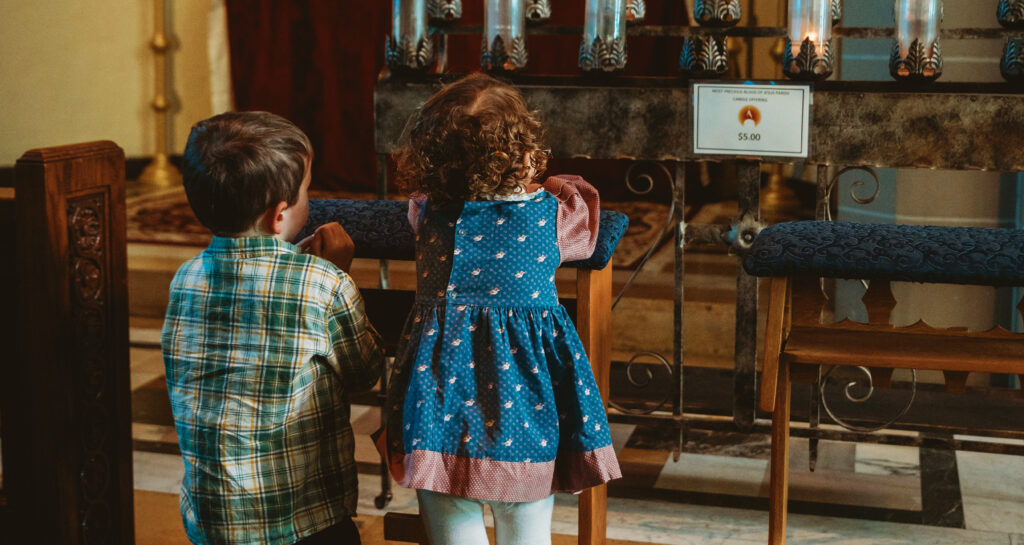
Prepare before you go
A little preparation can go a long way. Before heading to church, you can say a quick prayer with your kids — something simple like, “Jesus, help us worship You and love each other well today.” On the drive, remind your toddlers what to expect: “We’ll use our quiet voice in church, stand, sing, and listen to Father talk about Jesus.” Even if they don’t fully understand it yet, the repetition will start to sink in over time.
If you can, arrive a few minutes early. Point out the altar, candles, and statues, and let little ones take it all in. A few moments of quiet before Mass helps everyone settle — and sometimes those peaceful minutes feel like a small miracle.
It’s only fair to yourself, and your littles ones, to anticipate that things may not be all smooth sailing: a spill, three potty trips, or an extra giggly toddler. Mentally preparing and making peace with that ahead of time can help you respond with more calm when the unexpected happens.
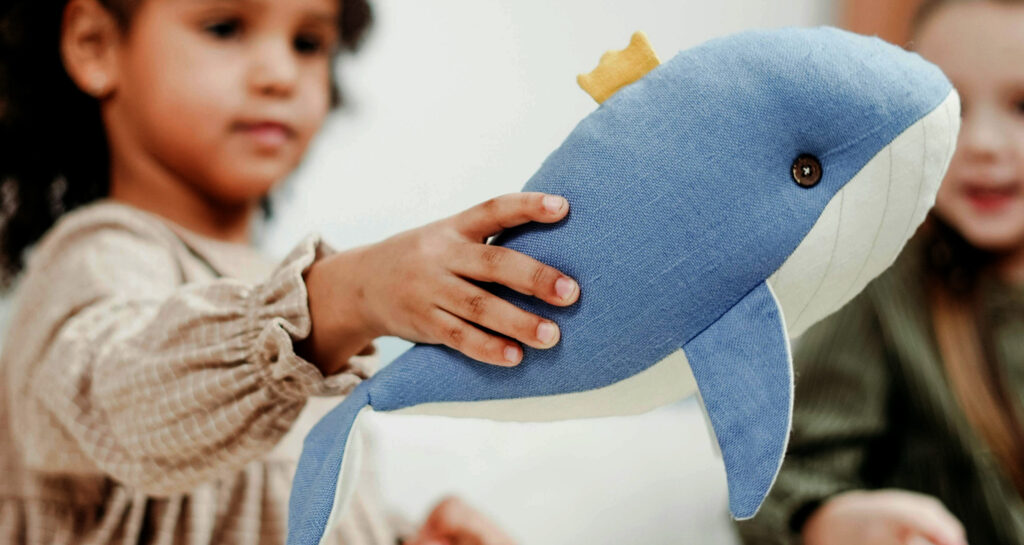
Bring a few quiet comforts
A small “church bag” can make a big difference. Whether it’s an actual bag or just a few items you keep in the car, keep it simple enough to slip into your purse or diaper bag and only bring it out during church so it feels special.
Here are a few ideas that have worked for our family (with trial and error!):
- Quiet, non-messy snacks — pretzels, crackers, dry cereal, fruit pouches, grapes.
- Water bottles, juice boxes, or spill-proof cups.
- One or two small quiet toys (teethers, silicone, or textured sensory toys) or books. Faith-based ones are great prayer-filled learning tools — more on this later.
- A coloring pad or sketch tablet with just one or two crayons or colored pencils.
Every child is different. Some toddlers eat tidily; others smash snacks like finger paint. It’s all part of learning what works and what doesn’t. And if you forget or run out of time to grab things, don’t panic. Kids are adaptable, and you may even find looking around the church or at some holy cards they find in the pew will keep their little minds occupied.
Note: Having some tissues and wet wipes on hand are a lifesaver when things get sticky in the pews.

Choose your spot strategically
Some families do best near the front — toddlers often behave better when they can see what’s happening. Others prefer the back or an aisle seat for an easy exit, especially when going through a particularly fussy or chatty stage. Try different spots until you find what helps your child feel most engaged and least restless.
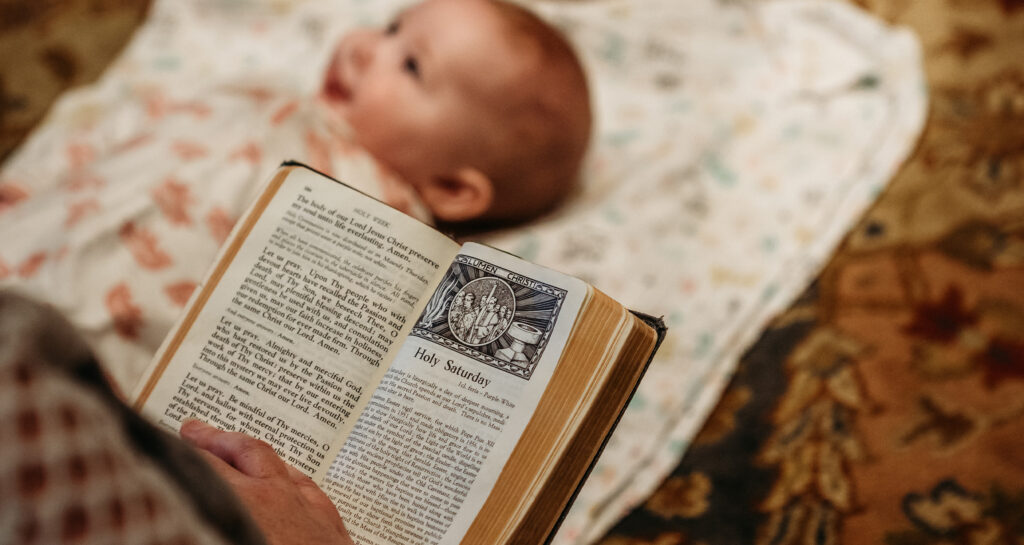
Knowing when to step out — and when to stay
With your children’s behavior at Mass, you’ll need to discern what’s appropriate for your particular circumstances. A little chatter or happy humming is fine (and to be expected!), but if your child is crying hard, shouting, or running down the aisle, sometimes the best option is to step out for a moment if other methods aren’t working. You shouldn’t feel like you have to obsess over avoiding judgment or protecting others’ “peace and quiet” — but a quick breather or a little discipline as needed helps your child (and yourself) find calm and return with a softer heart.
There’s a saying I love: “If the church isn’t crying, it’s dying.” It’s true — children bring life and joy into our parishes. Their presence reminds us that the Church is alive and growing. At the same time, teaching little ones church etiquette — using quiet voices, staying near mom or dad, not charging toward the altar — helps them learn that God’s house is both a place of joy and also holy reverence.
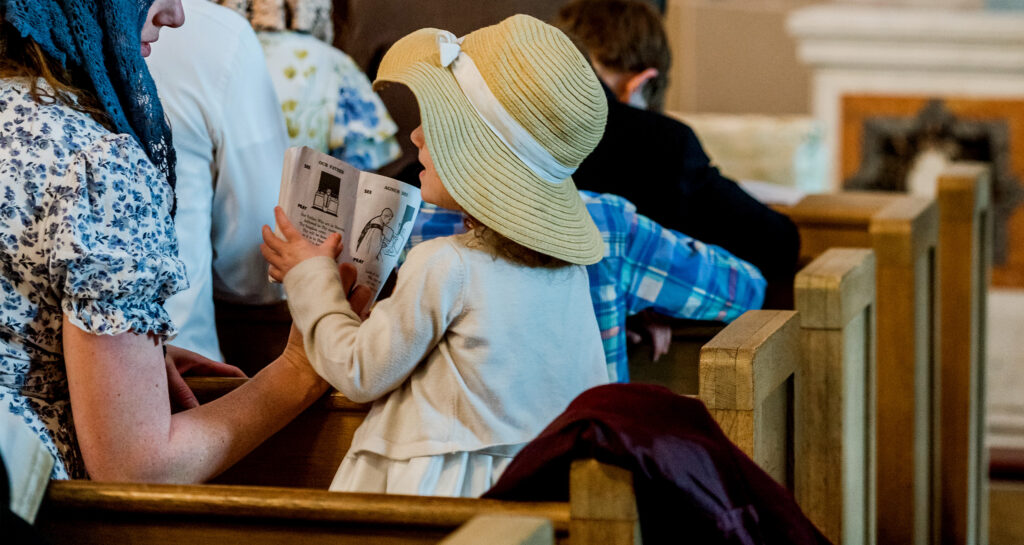
Help littles engage in what’s happening
Children are natural observers. Whisper little explanations throughout Mass: “Now Father is preparing the altar,” or “We’re kneeling because Jesus is here.” Even young children can sense the sacredness of what’s unfolding.
Encourage them to join in the prayers or simple responses. They may not understand everything yet, but repetition helps them feel part of the rhythm of worship. And when they see you praying, singing, and kneeling, they learn by example that this moment is special.
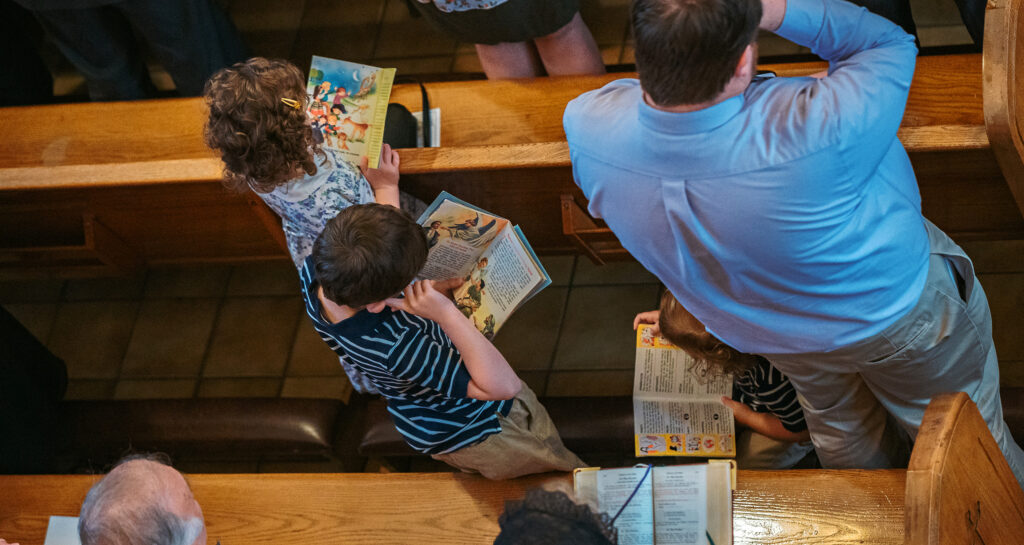
Use books to build familiarity
Children’s books about the Mass can be wonderful tools to help little ones connect what they see in church with what they learn at home. Keeping one in your church bag gives them something quiet to look through — and reading together during the week can make the liturgy feel more familiar and exciting.
A few lovely options:
- The Mass for Children — a gentle, colorful walk through each part of the Mass.
- Jesus and the Miracle of the Mass — a charming way to introduce the Eucharist and help kids grasp the beauty of what’s happening at the altar.
You can also look for parish bookstores or Catholic gift shops for seasonal or saint-themed board books. The more they see and hear at home, the more familiar — and peaceful — Mass will feel.
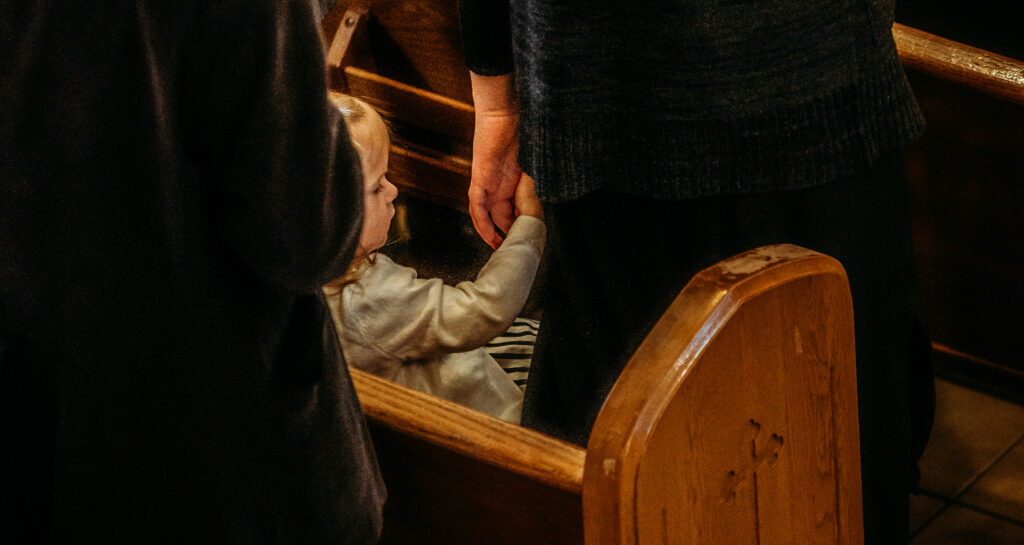
After Mass: celebrate the effort, not perfection
When the final blessing comes, resist the urge to grade the experience. Celebrate that you made it — and that your children came to see Jesus. Encouragement like, “You did such a good job praying today!” helps them associate Mass with joy, not stress.
Even if they struggled, ask what they noticed. You might be surprised by their answers: “The bells!” “The candles!” “Jesus on the cross!” Their observations are often little reminders of the wonder we adults forget to note.
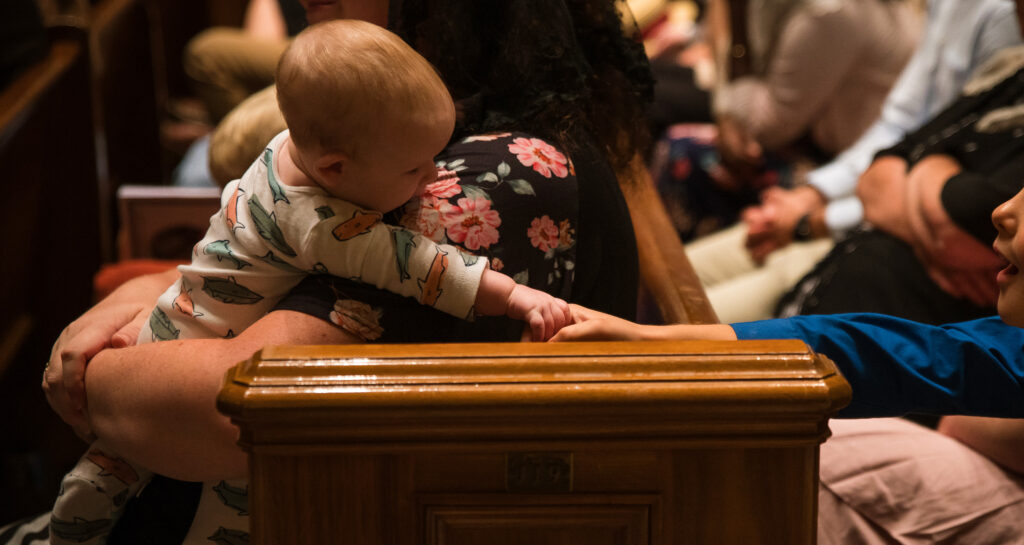
Practice makes progress!
For Catholic families, weekday Mass can be a gentle training ground. The shorter, quieter liturgies are great for practice without the Sunday crowd, and the more exposure you give your little ones the better it is for developing familiarity and appreciation.
If you’re going with your spouse or another adult, take turns managing the baby or walking with a restless toddler. And don’t be afraid to introduce yourself to your priest or a nearby family. Having a few friendly faces around you can make a difference.
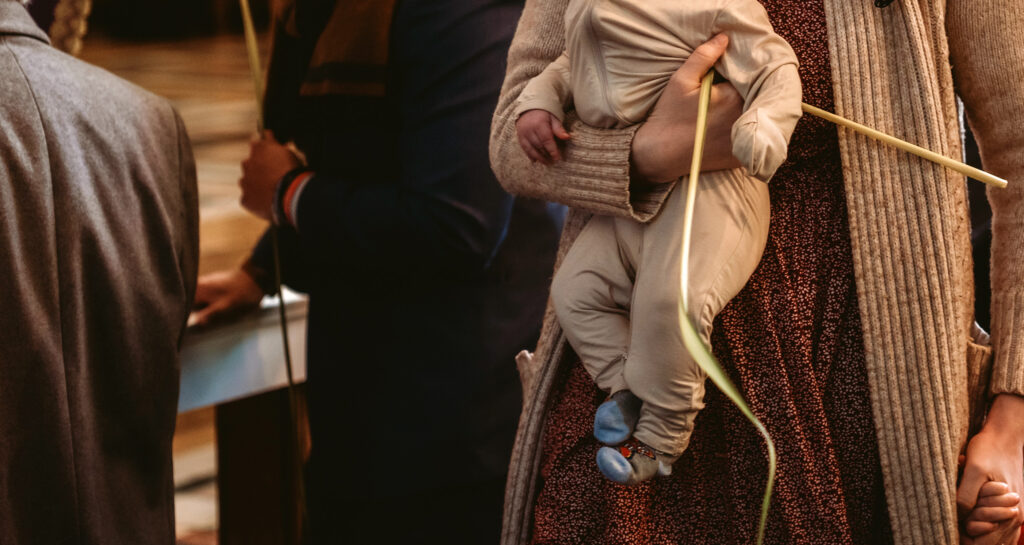
Find grace in the effort
What I’ve learned thus far from attending Mass with toddlers is that there’s no secret formula, and no magical age when church suddenly becomes easy. Some days you’ll leave feeling grateful and others just tired — but both are holy offerings. Each time you bring your children before God, even amid the fidgets and whispers, you’re showing them what faith looks like: patient, joyful, persevering.
So keep going. Keep trying. Keep praying. God sees every ounce of effort, every small act of faith. Someday, you’ll look back and realize those noisy, beautiful years were teaching all of you something sacred: that worship isn’t about perfection — it’s an offering of love.




The organist told us that after years of paying attention, she can always tell when a major weather system is approaching by the restlessness amongst the babes in the pews.